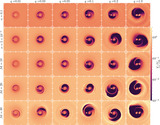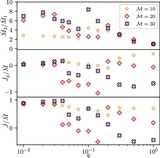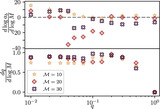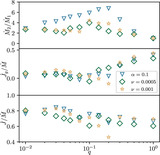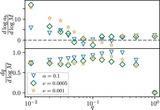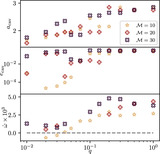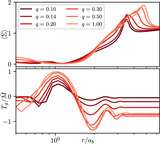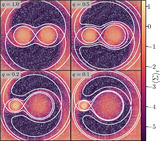Image Details
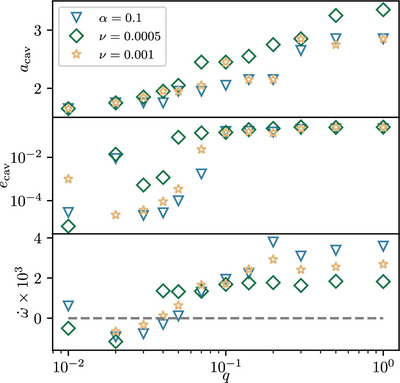
Caption: Figure 7.
The same disk properties plotted in Figure 6, but for our simulations of ﹩{ \mathcal M }=10﹩ disks with viscosities ν = 0.001, ν = 0.0005, and α = 0.1. The lowest constant-viscosity disks, at least for q ≳ 0.1, tend to have larger cavities and precess more slowly. However, at those same higher mass ratios disks with α = 0.1 tend to precess appreciably faster than disks with ν = 0.001, even when they have smaller cavities, illustrating the important dynamical differences that arise from different spatial viscosity profiles. Generally, as binary mass ratio decreases, so does the disk precession rate, albeit nonmonotonically. Similarly, at q ≲ 0.05, many disks exhibit retrograde precession, although curiously the α = 0.1 disk around a q = 0.01 binary precesses in a prograde sense. Numerical values are provided in Table 4.
Copyright and Terms & Conditions
© 2024. The Author(s). Published by the American Astronomical Society.


